They can detect a blackspot from a mile away, tell you when you are tailgating a vehicle, or even if you need a chai break. Government and law enforcers are banking on new road safety tech to tackle traffic collisions

A truck driver browses through the free-of-cost mobile app Humsafer, developed by a Mumbai-based startup, run by co-founders Jehaan Kotwal and Sumedh Mane. The app keeps the driver engaged with fun interactive quizzes on Bollywood and cricket, to prevent them from catching a wink while driving. Pic/Ashish Raje
The death of industrialist and former Tata Sons chairperson, Cyrus Mistry, in a road accident last Sunday, which took place on the Mumbai-Ahmedabad highway, has opened a Pandora’s box. From what went wrong in the vehicle that the party of four was travelling in—of which two including Mistry died on the spot—to how faulty road engineering played its part in the deadly crash, and how seatbelts in the rear need to be made mandatory, every aspect has been analysed over the last one week.
Experts say the answer to all these problems is technology. For the last few years, India’s leading tech minds have been working overtime to counter human and mechanical limitations to make the country’s roads safer.
ADVERTISEMENT
 Jehaan Kotwal and Sumedh Mane’s road safety app, HumSafer, was launched during the lockdown. The idea for the app emerged when Kotwal took over his trucker father’s transport business. “My father started out with 10 trucks. At the time, our trucks would see at least two or three accidents each year. By the time we reached 110 trucks, I was able to reduce accidents to just about one a year with the help of the technology,” he says. Pic/Ashish Raje
Jehaan Kotwal and Sumedh Mane’s road safety app, HumSafer, was launched during the lockdown. The idea for the app emerged when Kotwal took over his trucker father’s transport business. “My father started out with 10 trucks. At the time, our trucks would see at least two or three accidents each year. By the time we reached 110 trucks, I was able to reduce accidents to just about one a year with the help of the technology,” he says. Pic/Ashish Raje
According to data made available by NGO Indians For Road Safety, one life is lost in India every four minutes to road accidents. In the last decade, the country lost nearly 1.3 million people. India alone accounts for 11 per cent of the deaths that occurred globally due to road accidents, the highest share for any country. And this, despite India having just one per cent of the world’s vehicles.
In Maharashtra, according to the state traffic police department, between January and July 2022, a total of 19,677 accidents have taken place, of which 8,371 were fatal, killing 9,121 people in just seven months. Majority of these accidents took away the lives of young people and those from economically poor backgrounds.
“These incidents also put a dent in the country’s gross domestic product by nearly US$38.9 billion, equivalent to 1.85 per cent of the GDP,” explains Akhilesh Srivastava, who is the Project Lead for World Economic Forum’s Road Safety 2.0 project.
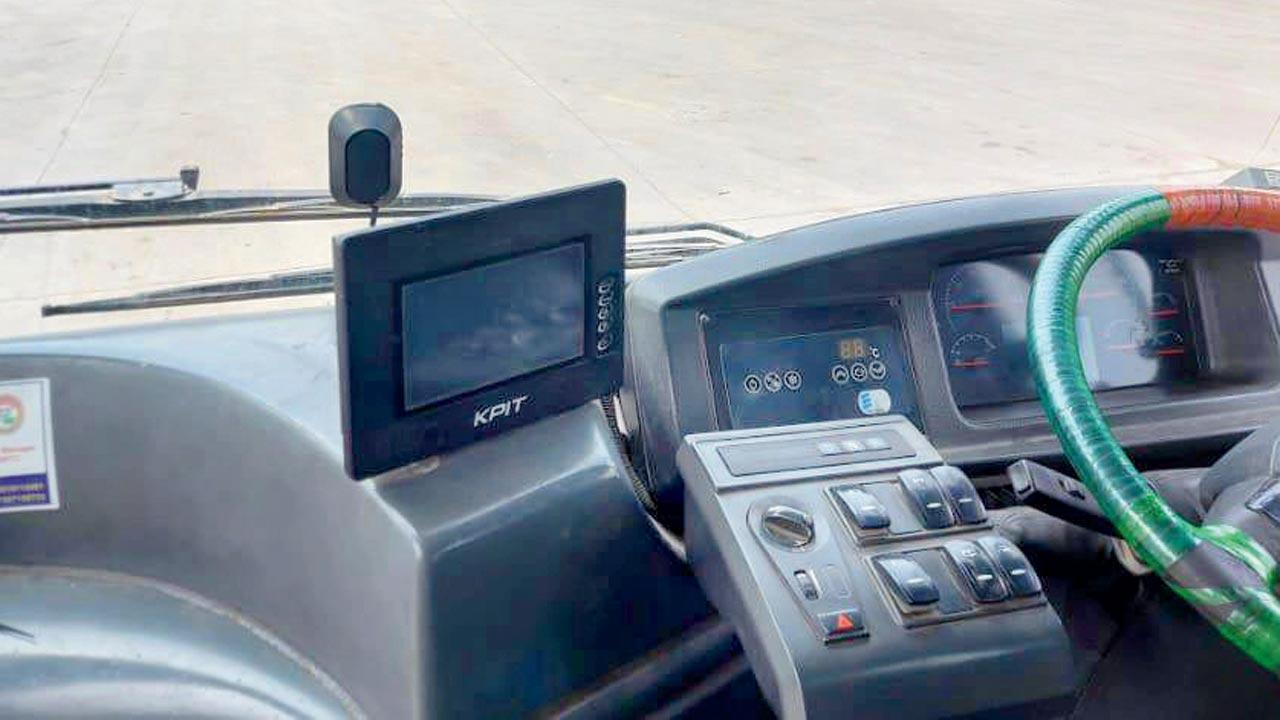 Mobileye has been installed in 250 city buses run by the Nagpur Municipal Corporation (NMC). The device contains two parts—a camera installed on the bus windshield facing the road, and the second device installed on the right side of the driver for him to listen to and see the alerts, based on his/her movements that have been captured, shares Prithvi Jonnada, Operations manager, INAI-IIIT Hyderabad’s applied AI research initiative
Mobileye has been installed in 250 city buses run by the Nagpur Municipal Corporation (NMC). The device contains two parts—a camera installed on the bus windshield facing the road, and the second device installed on the right side of the driver for him to listen to and see the alerts, based on his/her movements that have been captured, shares Prithvi Jonnada, Operations manager, INAI-IIIT Hyderabad’s applied AI research initiative
India’s road network is an extensive one running over 6.2 million km, and ever expanding at about 200 km added every year, he says.
So where are we going wrong? Srivastava clears the air. “The traditional and long-held approach to road safety is clearly not yielding the desired results. Despite efforts like zero fatality corridors, identifying and fixing blackspots, installing cameras for enforcement etc, the highest number of road fatalities took place in 2021.”
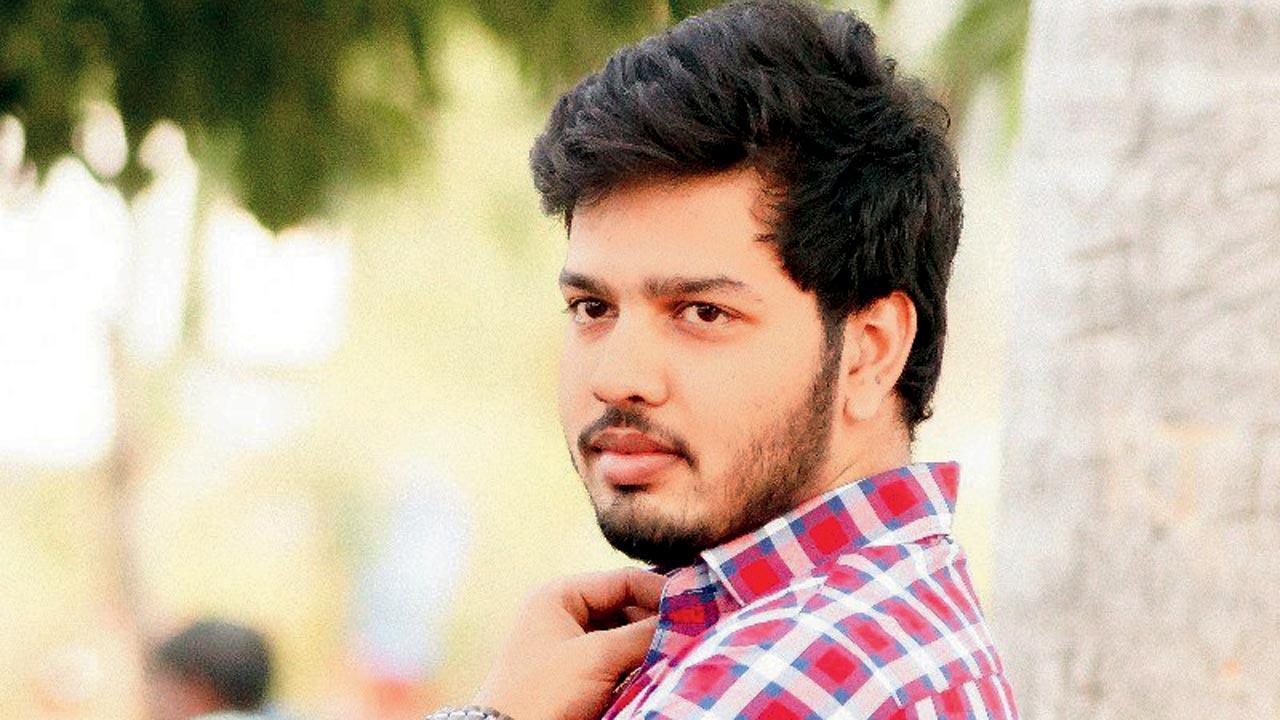
These measures, he says, are mere coping mechanisms adopted from the West, not exactly suitable to Indian roads. “The problem on Indian roads is multi-layered. Here, traffic is not homogenous like the in the West. Moreover, over 60 per cent of our traffic consists of two-wheelers, then there are pedestrians, cyclists, commercial vehicles, trucks, tractors and at times animals too. While Western countries focus on safety measures within the vehicles like seat belts, airbags etc, we need to focus more on safety measures outside of the vehicle without compromising on internal safety,” adds Srivastava.
Technology has clutched onto this evident gap. And now, efforts are on their way, majority of them being put to effect in the last one year, to change our behaviour on roads, while also developing an integrated system for road management and enforcement of rules.
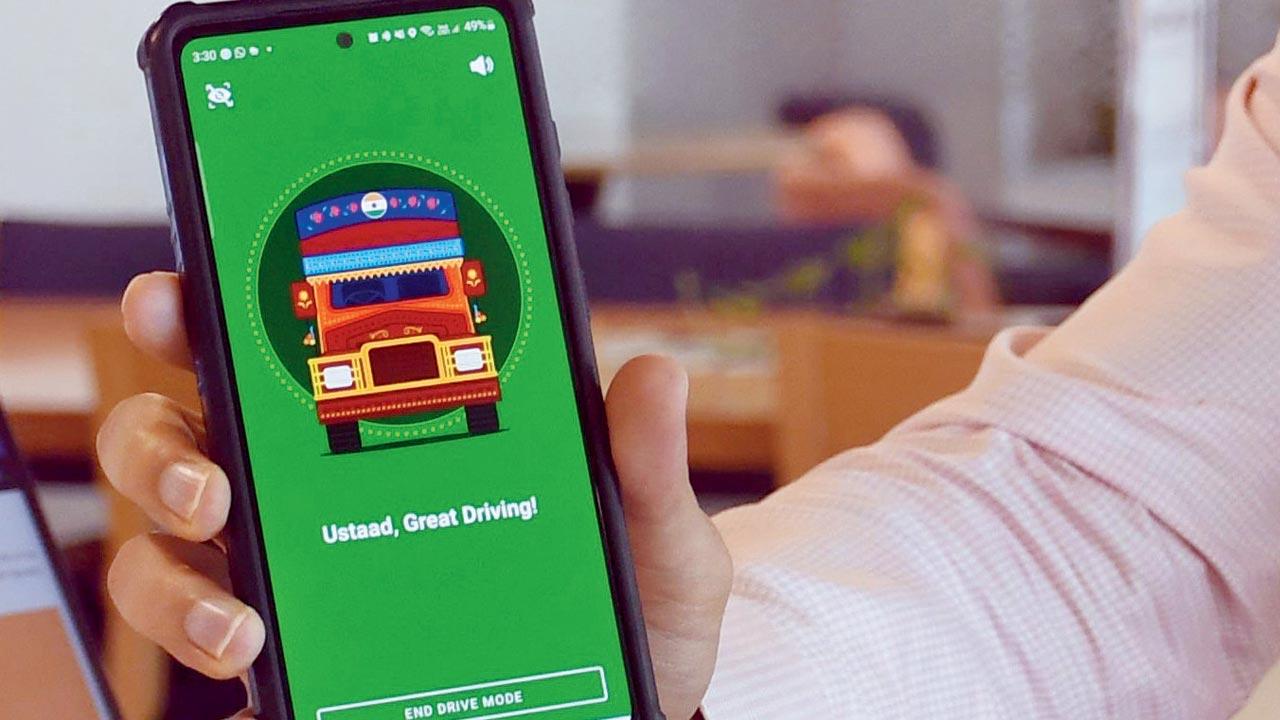 The free of cost HumSafer app has connected 20,000 truckers with Artificial Intelligence (AI) to detect sleeping drivers, faulty road designs and keep highway hypnosis at bay. Pic/Ashish Raje
The free of cost HumSafer app has connected 20,000 truckers with Artificial Intelligence (AI) to detect sleeping drivers, faulty road designs and keep highway hypnosis at bay. Pic/Ashish Raje
Artificial Intelligence is currently driving this technological enterprise. For instance, the International Institute of Information Technology’s (IIIT) applied AI research initiative (INAI) is trying to solve India’s multi-layered road problem with AI solutions like sensors and predictive analysis to warn drivers of collisions, even before they occur.
Called Mobileye, the device has been installed in 250 city buses run by the Nagpur Municipal Corporation (NMC), plying on 75 different routes in the city, shares Prithvi Jonnada, operations manager, INAI.
 Akhilesh Srivastava, Project Lead, World Economic Forum’s Road Safety 2.0 project
Akhilesh Srivastava, Project Lead, World Economic Forum’s Road Safety 2.0 project
Thanks to alerts from this device, Jonnada claims that the pilot project, iRASTE (Intelligent Solutions for Road Safety through Technology and Engineering)—launched in 2021 by Union Minister of Road Transport and National Highways Nitin Gadkari—brought about 48 per cent improvement in driver behaviour and driving. iRASTE is a collaboration between the ministry, INAI, CSIR-CRRI, Intel and Mahindra & Mahindra.
Srivastava says that the World Health Organisation (WHO) has identified four main risk factors hampering our safety. “Speeding, drunk driving, helmet use and use of seatbelt or child restraint. World Economic Forum-led Road Safety 2.0 pilots also reveal that the majority of accidents are due to human errors and can be prevented with the use of technology to compensate for human limitations.”
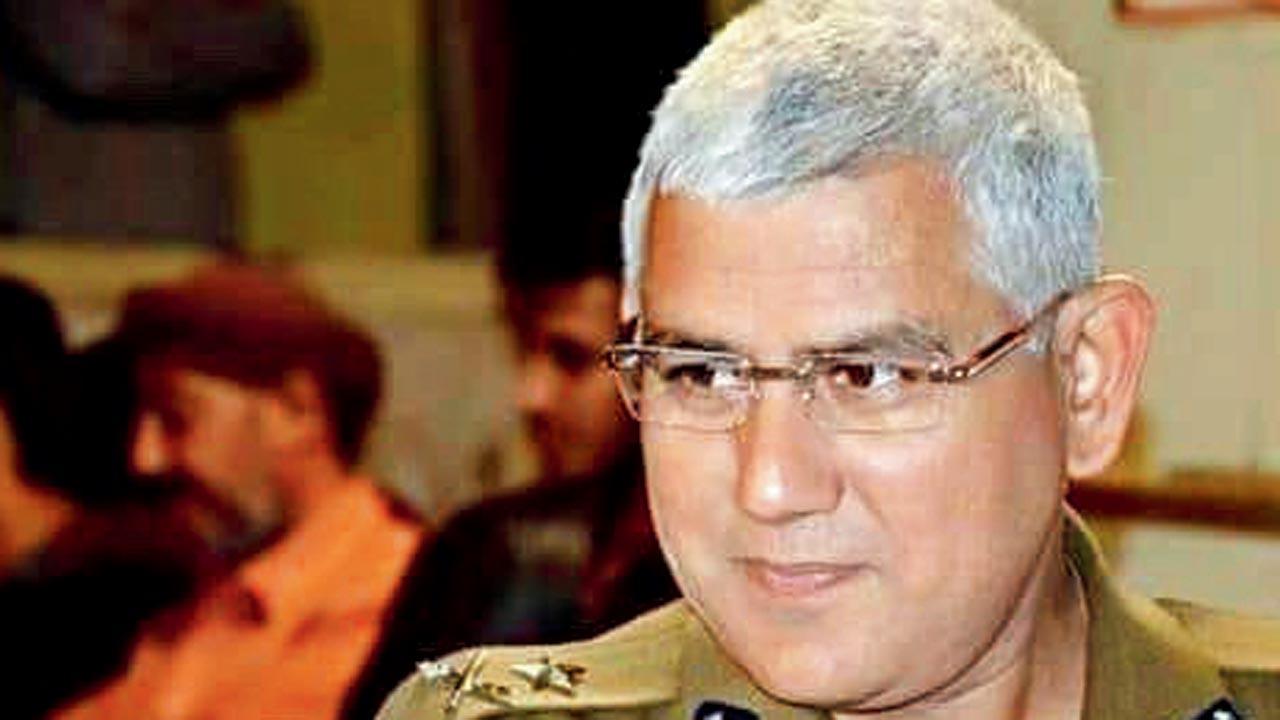 Kulwant Sarangal, ADG traffic, Maharashtra
Kulwant Sarangal, ADG traffic, Maharashtra
iRASTE uses the same logic. “Three aspects are part of the project—infrastructure safety, mobility analysis and vehicle safety. Under the first we detect blackspots [a place where road traffic accidents have historically been concentrated] and greyspots [likely to become blackspots based on the number of alerts generated in these areas] in the road design, and alert our drivers about them, even before they enter the area,” says Jonnada. The second aspect relates to installation of these devices in buses plying in Nagpur, and the last one corresponds to driver education programmes.
The central government has identified as many as 5,803 blackspots on national highways based on accident and fatality data between 2015 and 2018 in 30 states/UTs.
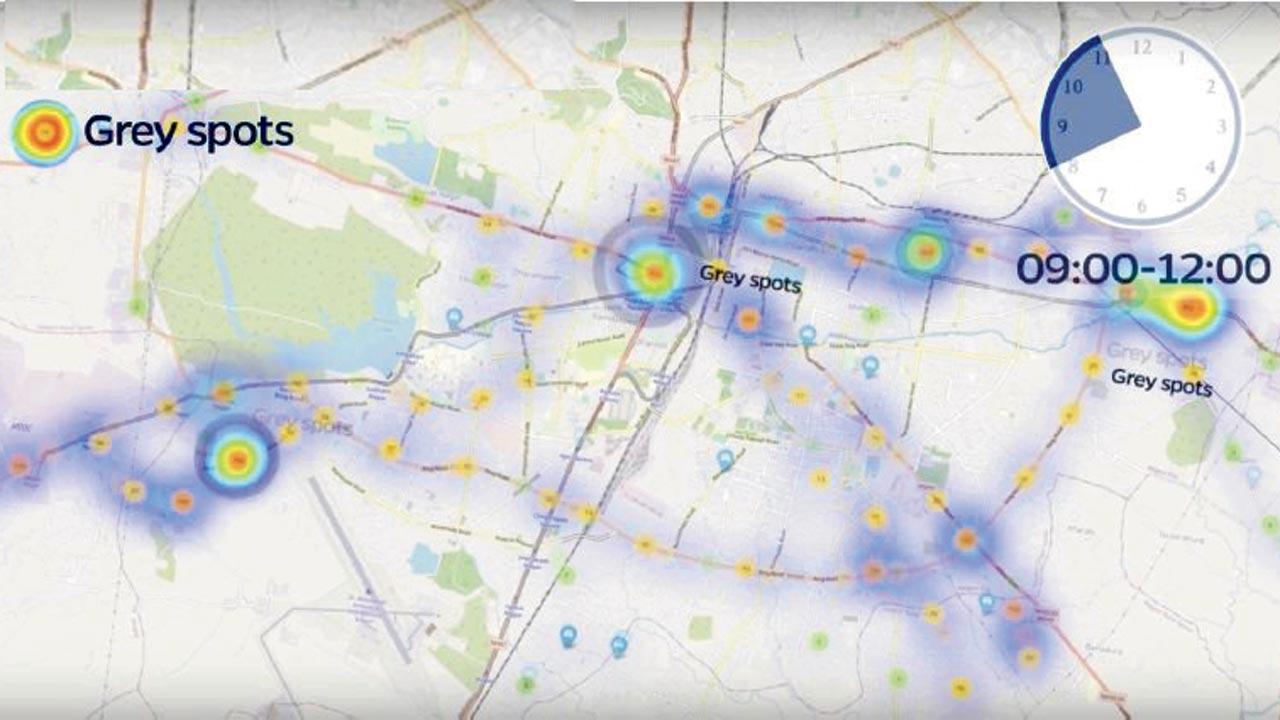 Visual of grey spots, which may become probable blackspots in future, as seen by bus drivers on the INAI’s Mobileye device
Visual of grey spots, which may become probable blackspots in future, as seen by bus drivers on the INAI’s Mobileye device
The device, Mobileye, contains two parts—a camera installed on the bus windshield facing the road and the second device installed on the right side of the driver for him to listen to and see the alerts, based on his/her movements that have been captured.
The wrong moves will lead to an alert, and also be read and stored by researchers on their cloud back at INAI. “The device camera is able to see objects ahead of the bus, which may be missed out by the human eye. Alerts are then sent to the drivers—for instance, when there is a cyclist or pedestrian ahead of the bus, or when the bus is getting too close to the vehicle in front that could lead to a collision. If there are a number of alerts generated at a particular junction, we identify it as a greyspot, which could become a potential blackspot in future and help the government in upgrading its data,” Jonnada explains.
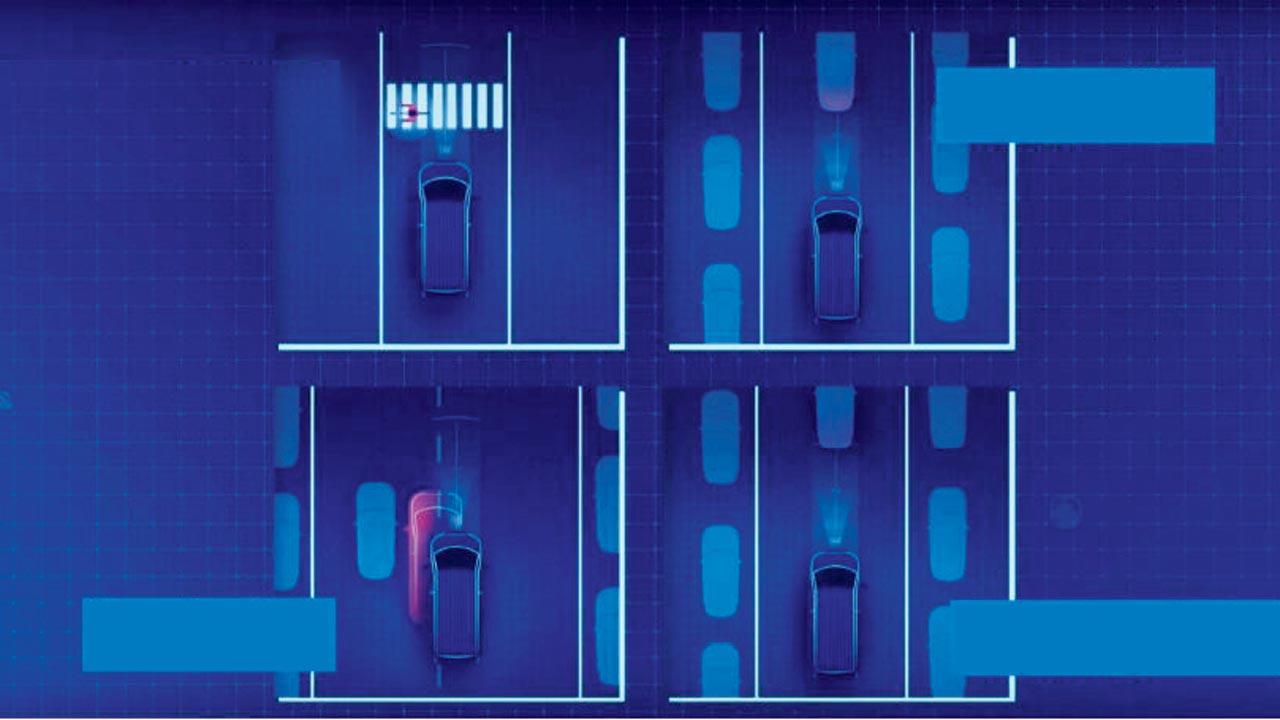 Graphic representation of INAI’s anti-collision warning
Graphic representation of INAI’s anti-collision warning
Mumbai-based startup HumSafer app uses AI to send alerts to drivers in case of over speeding—beyond 65 kmph for a truck—and when there are danger zones like blackspots coming up within 500m to a kilometre range. The app can also detect if a driver is dozing off. “To cut out highway hypnosis that can occur during long durations of driving, the app keeps the driver engaged with fun interactive quizzes on Bollywood and cricket etc, alerts for a tea break—chai ki chuski maarlo, truck thak gaya aap nahi thake? It also reminds them to call family and friends,” says Jehaan Kotwal, co-founder and CEO of HumSafer. “The AI can even detect sleep by counting the number of blinks, which are required for a person to stay awake. The app then calls out, ‘Ustad uth jao, aap so rahe ho’.”
The idea for the app emerged when Kotwal took over his trucker father’s transport business. “My father started out with 10 trucks. At the time, our trucks would see at least two or three accidents each year. By the time we reached 110 trucks, I was able to reduce accidents to just about one a year with the help of the technology. That’s when I opened the app for everyone. Now, there are 20,000 truckers associated with us.”
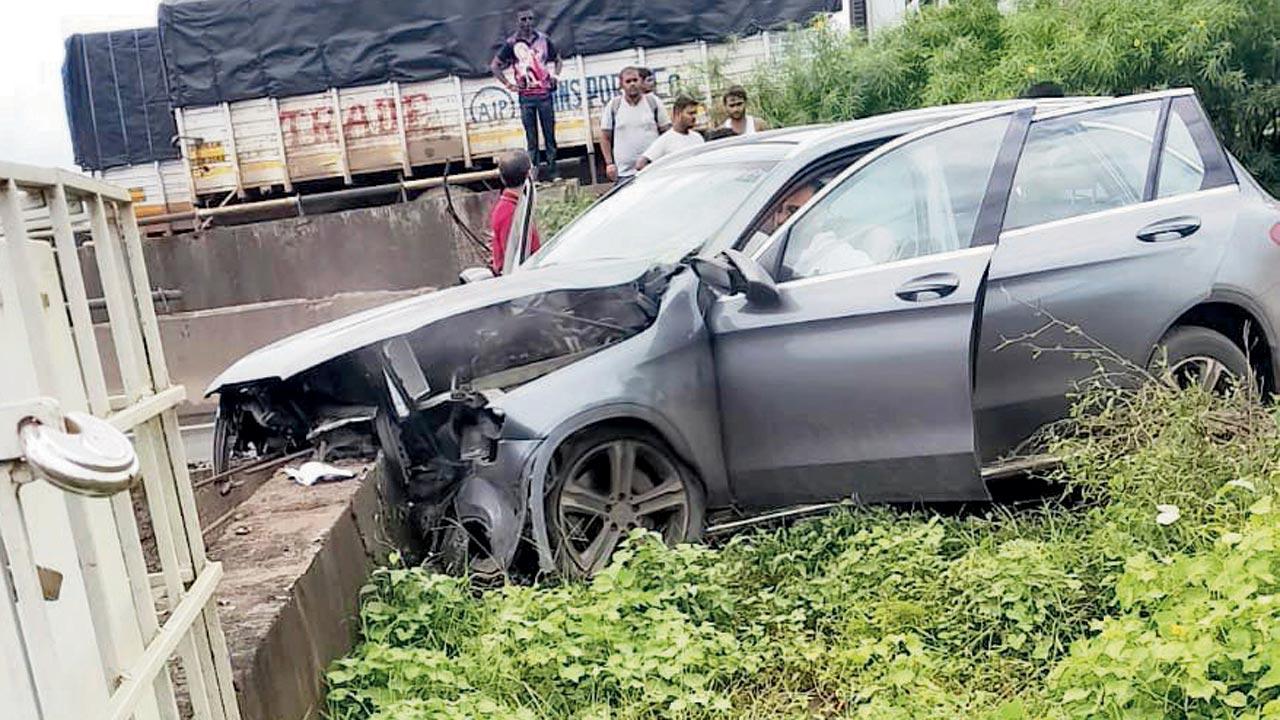 Industrialist Cyrus Mistry, 54, and his friend Jahangir Pandole died on the spot when their Mercedes car hit a road divider in Palghar district on September 4. Mercedes-Benz has submitted an interim report on the fatal accident. As per the automaker, the brakes of the car were pressed five seconds before it crashed into the road divider
Industrialist Cyrus Mistry, 54, and his friend Jahangir Pandole died on the spot when their Mercedes car hit a road divider in Palghar district on September 4. Mercedes-Benz has submitted an interim report on the fatal accident. As per the automaker, the brakes of the car were pressed five seconds before it crashed into the road divider
While INAI’s Mobileye does not have a sleep detection facility available in Nagpur’s city buses, the project has recently been expanded to Telangana, where sleep detection is also an integral part of the device. “Here, the Driver Monitoring System (DMS) is an additional third camera installed in the bus that faces the driver. Its sensors can detect smoke, and mobile phone usage while driving and asleep, based on human blinking patterns.”
According to Srivastava, deficits in road engineering that create accident-prone spots, sudden appearance of potholes and poor safety measures in the vehicles also contribute to accidents. To address a part of this problem, just this week, advertising agency Denstu, along with the Brihanmumbai Municipal Corporation (BMC) and TVS Motor Company, launched The Responsible Manhole. Under it, a cylindrical device which acts as a warning mechanism, has been installed beneath manholes in areas more prone to flooding in the city. It is integrated with an app developed for the BMC, which shares the geo-location of an open manhole in real time. In case of heavy rainfall and flooding, when the manhole cover is dislodged, the device rises above the ground, alerting commuters with LED blinkers and buzzers. The BMC also gets notified about the situation for required action.
A study of the Road Safety 2.0 pilots revealed that behavioural change can solve most problems on the road. “Behaviour can be changed either by the fear of penalty through strict enforcement or by self-motivation through incentives. For a densely populated country like India, encouraging and self-motivating drivers for better driving through incentives and rewards can be a better option,” Srivastava thinks.
He adds, “Tracking driver behaviour through a mobile app and converting it into Safe Driving Score (SDS), which can be monetised to incentivise good driving behaviour is the right methodology. Higher scores will fetch the driver more benefits and motivate others, too. A high score in turn means better driving and therefore, lesser accidents. We are trying to link SDS with rebates in insurance premium, fuel payment, vehicle workshops etc. In fact, the government should make SDS mandatory for all drivers and their scores should be required for all road-related transactions like CIBIL scores are for financial transactions.”
HumSafer has already put that into motion. Having developed a free of cost mobile app for its truck drivers, HumSafer converts good driving scores into cash rewards. “The driver can make somewhere between Rs 500 and Rs 1,000 a month by good driving alone, over and above his regular wages. We convert their points into money, which is then sent to them through UPI,” says Kotwal.
As of now, INAI does not provide monetary incentives to good drivers, but it does provide a performance chart of top 10 and bottom 10 drivers and gives out certificates to well performing drivers as motivation to keep up the good work.
But, ultimately law enforcement is the most important cog for behavioural change, says Kulwant Sarangal, additional director general of police, Maharashtra Traffic Police. “Road violations jeopardise lives of multiple people and offenders have to be charged. An imposed cost leads to improved behaviour. Monitoring is essential.”
His department has been using technology for enforcement of traffic rules and regulations compoundable under the Motor Vehicles Act, 1988. “We have built an integrated system to levy a fine on defaulters on the road, operational from 2019. It is called one state, one e-challan and it is a one-of-its-kind of project running for an entire state. No other state has a holistic setup like this. The system integrates all challans digitally in one place, coordinates with Lok Adalat for recovery of challans and vehicles, sends out messages to offenders and runs a call centre for queries and complaints of those charged with a challan. We also impound licenses digitally now,” he says.
The Maharashtra traffic department has also installed CCTV cameras across highways, and a digital system to catch hold of violations. “We have speed guns to check for speed violations. Some speed guns are also installed with cameras to check for seatbelt violations.”
As per data shared by Sarangal’s department with mid-day, there were 9,79,981 speed violations between January 1, 2022 and September 7, 2022. Between the same dates, 9,24,915 challans were issued for seatbelt violations. In 2021, a high total of 18,68,664 speed violations and 9,27,491 seatbelt violations were made across the state.
The state traffic police also uses the Integrated Road Accident Data app, developed by IIT Madras and adopted by the road and transport ministry across the country. It is a collection of data of all road accidents to be reported from each and every district. “We are using the app to feed in data and act as early responders to any accident. In due time, it will also link health agencies, trauma management facilities and also, the public to enter data on real time road accidents for quick response.” He adds, “The Pune Expressway and Maharashtra State Road Development Corporation [MSRDC] are also coming up with an Integrated Traffic Management system, for which work order has already been allotted. Cameras will be installed across the highway to regulate violations.”
While technology, hand-holding and behavioural changes are all being put to effect on ground, Sarangal feels that where we falter is with the “quality of our data”. “For example, many times because an agent books multiple cars and does so with his own mobile number, we get stuck when issuing a challan. The same number appears for multiple vehicles, which is neither the driver’s nor the owner’s. Our fine recovery takes a hit there and so does enforcement.”
9,121
No. of road fatalities in Maharashtra between January and July 2022, according to the state traffic police department
 Subscribe today by clicking the link and stay updated with the latest news!" Click here!
Subscribe today by clicking the link and stay updated with the latest news!" Click here!








